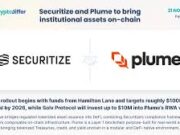The cryptocurrency space thrives on bold predictions, extreme volatility, and heated debates. Yet, few names stir the pot as consistently as Peter Schiff, the outspoken gold advocate and longtime critic of Bitcoin. Recently, Schiff took aim at MicroStrategy (now rebranded as Strategy) and the wave of public companies adopting its Bitcoin-heavy treasury model. With MicroStrategy shares down 45% from their November 2024 peak, Schiff is warning that these “Bitcoin treasury companies” may not survive the next downturn (CoinDesk, Bloomberg).
But is this alarm a fair warning—or just Schiff’s gold-bug bias resurfacing? Let’s break it down.
The Man Behind the Mayhem: Schiff’s Longstanding Bitcoin Skepticism
Peter Schiff, chief economist at Euro Pacific Asset Management, has criticized Bitcoin since its earliest days, branding it “a bubble” and “fool’s gold.” While Schiff lost a $100,000 bet against Bitcoin in 2019, he continues to argue that crypto is speculation rather than substance (CNBC).
On September 25, 2025, Schiff posted on X (formerly Twitter):
“While so many companies have been busy copying @Saylor’s harebrained business strategy, few have noticed that $MSTR is down 45% from its Nov. 2024 high. This is going to be a brutal bear market for Bitcoin Treasury companies. I’m not sure if any, including MSTR, will survive it.”
His words echo warnings he’s repeated throughout 2025, including calling these treasury plays “Ponzi-like pyramids” (Kitco News). And given MicroStrategy’s correlation with Bitcoin, it’s not surprising his words are resonating in investor circles.
Saylor’s Bitcoin Revolution: Turning Strategy into a Corporate Hodler
Michael Saylor, executive chairman of Strategy, pioneered the concept of a corporate Bitcoin treasury. Beginning in 2020, he aggressively shifted the company’s balance sheet into Bitcoin—funded by stock offerings and debt issuance. By mid-2025, Strategy had accumulated 639,835 BTC worth about $70 billion (Bitcoin Magazine).
Saylor’s mantra is simple: cash is trash; Bitcoin is digital gold. He has promoted this vision at major conferences, even predicting a $200 trillion Bitcoin economy by 2045 (Fortune).
Initially, the pivot was wildly successful. MicroStrategy stock surged over 3,000% since 2020, making Saylor a crypto evangelist for corporations worldwide. But as Schiff points out, the volatility underpinning this model can swing the pendulum quickly.
Herd Mentality: Corporations Following the Bitcoin Treasury Model
Saylor’s model has inspired a wave of imitators. As of September 2025, more than 190 public companies hold Bitcoin on their balance sheets, up from 70 at the end of 2024 (CoinGecko). These include:
- Jet King Infotrain – India’s first public company to adopt a Bitcoin treasury approach.
- Mara Holdings – A U.S.-based miner holding $4.5 billion in BTC.
- Hamak Gold Limited – A mining explorer that pivoted from gold to Bitcoin.
Critics, Schiff included, argue that these are “echo chamber” plays rather than mainstream adoption. Indeed, most firms adopting Bitcoin are crypto-native or speculative ventures, not Fortune 500 blue chips (Decrypt).
The Numbers Don’t Lie: MSTR’s 2025 Rollercoaster
MicroStrategy’s stock soared to $473 in November 2024, but by late September 2025 it had slumped to $294—a 45% decline. Bitcoin’s own slide from $113,722 to $108,713 amplified the pain (Yahoo Finance).
Adding pressure, Strategy’s Q1 2025 earnings missed expectations: EPS came in at -16.53 versus -0.11 expected, and revenue slipped below forecasts. Software sales grew 62% in cloud subscriptions but couldn’t offset crypto volatility (MarketWatch).
Other treasury-inspired companies also saw brutal declines: NAKA lost 55% in September alone, while premiums to net asset value shrank dramatically across the sector.
Why Schiff Thinks Treasury Plays Are a House of Cards
Schiff’s harshest critique is leverage. Strategy has financed Bitcoin purchases with convertible debt and equity offerings. In a rising market, this strategy multiplies gains. But in a downturn, it magnifies losses. Schiff argues that if debt obligations pile up, firms may be forced to sell Bitcoin at depressed prices, triggering cascading declines (TheStreet).
This concern isn’t unfounded. During the 2021–2022 crypto winter, MicroStrategy stock plunged 89%, far steeper than the broader S&P 500. Treasury companies are effectively BTC proxies with added risk, Schiff says.
Is It Innovation or Illusion?
While Schiff calls it reckless speculation, Saylor frames the strategy as financial innovation. He envisions Bitcoin as the ultimate settlement layer for nations, corporations, and even artificial intelligence (Forbes). He argues that we’re still in the “early innings,” with institutional adoption just beginning.
Yet skeptics warn that with $117.91 billion now tied up in corporate Bitcoin treasuries, the risk of systemic contagion is growing if Bitcoin’s price craters (Glassnode).
What History Tells Us About Bear Markets
History suggests that leveraged bets are the first to collapse in downturns. The 2018 crypto crash erased 80% of market value, disproportionately harming speculative projects. Schiff points to this pattern, warning that Bitcoin treasury stocks could be the canaries in the coal mine this time around.
Still, Saylor remains undeterred. In August 2025, Strategy made its third-largest BTC purchase ever, signaling confidence in the long-term vision (Cointelegraph).
Final Thoughts: Schiff’s Skepticism vs. Saylor’s Conviction
The debate between Schiff and Saylor reflects a broader divide in financial markets. Optimists see Bitcoin as a revolutionary asset class with untapped potential. Pessimists view it as a speculative mania destined to unravel.
For investors, the lesson is clear: Bitcoin—and especially Bitcoin treasury stocks—offer huge upside but carry equally massive risk. Diversification, rather than blind allegiance to either camp, may be the wisest course forward.
Sources:
- CoinDesk
- Bloomberg
- CNBC
- Kitco News
- Bitcoin Magazine
- Fortune
- CoinGecko
- Decrypt
- Yahoo Finance
- MarketWatch
- TheStreet
- Forbes
- Glassnode
- Cointelegraph



























